This post was written by Danielle Davis ’19
Leadership has always been a topic that intrigued me; its definition different for each person that encounters it. In module two we had a formal course titled Leading for Sustainable Innovation with Kenneth De Roeck, Ph.D. as well as a seminar series that stretches across all 4 modules with Joe Fusco, accomplished business leader and The Sustainable Innovation MBA Program Director.
 Leading with Kenneth was a formal 2-credit course with two exams, some reflection papers, hundreds of slides and a daily-Stromae video. The material, although intuitive, proved to be difficult to memorize. We discussed leaders in the field of organizational leadership, their theories and some student testimonials that fleshed out the concepts learned in class considerably.
Leading with Kenneth was a formal 2-credit course with two exams, some reflection papers, hundreds of slides and a daily-Stromae video. The material, although intuitive, proved to be difficult to memorize. We discussed leaders in the field of organizational leadership, their theories and some student testimonials that fleshed out the concepts learned in class considerably.
The seminar series with Joe is an ongoing two-hour session with Joe, reviewing higher-level concepts with real-life examples from an expert in the field. My desire to learn more about leadership stems from a curiosity to figure people out, find out what motivates them, and learn how to help them become the most productive member of a team that they can be. To me, it was and still is about leading by example, and as an introvert I thought at times doing so silently would suffice.
MBA 302.04: Leading for Sustainable Innovation with Kenneth
Initially the concepts presented in class seemed intuitively foreign – does that even make any sense?! Until stepping into this course, leadership has been woven into various summer jobs and internships, my previous job in the “account leadership” department at an advertising agency, and throughout various sports endeavors. Until this moment, though, I had yet to see leadership concepts formatted in a PowerPoint or scribbled on a whiteboard. It felt counterintuitive initially. My preconceived notions about leadership were that it was a skill learned through experience, and that’s how you made personal improvements. I was skeptical that this was something that could be learned through a text book. Going in, I was more so thinking this would be equivalent to reading a self-help book. I was excited to see how it would go nonetheless.
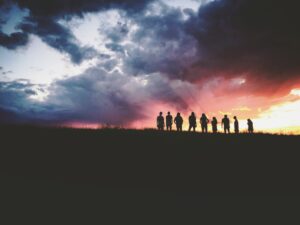 Leading for Sustainable Innovation ended up being one of my favorite classes. Seeing a familiar concept fleshed out, explained in depth, proved (through student testimonials, personal reflections and long-standing industry theories) to then understand it on a deeper level and be able to apply it in the world around me. It was great. There were several few high-level takeaways from this course, but I keep the following flashcard(s) in my backpack while the others have made their way into the recycling bin.
Leading for Sustainable Innovation ended up being one of my favorite classes. Seeing a familiar concept fleshed out, explained in depth, proved (through student testimonials, personal reflections and long-standing industry theories) to then understand it on a deeper level and be able to apply it in the world around me. It was great. There were several few high-level takeaways from this course, but I keep the following flashcard(s) in my backpack while the others have made their way into the recycling bin.
The 7 qualities of an effective/exemplary leader as told by Kenneth and his collection of theorists:
- Stress tolerance (being comfortable with uncertainty, proactively cope with stress)
- Self-confidence (having high self-efficacy about ability to lead others + achieve objectives)
- General cognitive ability (above average cognitive ability, can process a lot of information + analyze scenarios + opportunities)
- Energetic-ness (ability to work long hours, passionate, + always “on”)
- Emotional intelligence ability* (self/other awareness: strong interpersonal skills (e.g., conflict management, empathy))
- Integrity* (an aspect of trustworthiness, aspect of ethical leadership)
- Drive (based on purpose and passion, inner motivation to pursue goals + encourage others to pursue their goals, high need for achievement)
*Integrity and Emotional Intelligence being the most important aspects of effective leadership
The Leadership Seminar with Joe
The leading seminar with Joe includes lessons learned through business. It’s a personal testament to the intricacies of leadership from the perspective of someone with a high level of experience. The dos, do-nots, and the as told by Joe Fusco, someone with decades of experience being and dealing with leaders of all kinds. Joe emphasizes the importance of self-reflection in a leadership role. He uses the “Head, Heart, Hands” model to ask the leader to look within. Check in with yourself cognitively (head): have you learned anything, are you frustrated about something? with your body (hands): have you been sleeping well, getting enough exercise? and emotionally (heart): how are you, do you miss someone or is there any conflict on your mind? Until you are secure with these three facets of yourself, it will be difficult to lead others.
Thus far, the optional sessions have included 2-3 broad topics expounded upon throughout our morning together. Joe speaks of his personal experience with good and bad leaders, his experiences as a good leader, and some moments of personal improvement. Substantial takeaways included:
- Asking others to reflect on strengths and weaknesses
- Crave feedback and receive it gracefully + with gratitude
- Impact vs. Intention
- Head, Heart, Hands
We learned that your intention is less than half the battle. Even if you have the best intentions, it’s likely your impact on others through your words or actions are not exactly how you intended them to be. Check in with your peers early and often. Ask for feedback. Crave feedback. Receive feedback gracefully and with gratitude.
Preconceived Notions Through Work and Athletics
Thus far I’d done some internalizing – who are my favorite leaders and why? What did they do, and why did I work hard for them? This geared my focus to checking in outside of work, making the work and our relationship personal so they would find themselves more willing to work hard for me. I wanted to be someone that they can count on within the bounds of the court, but more importantly off.
At the end of the day, it’s the people that matter. The work and the wins are important, but if your employees don’t want to be there – how high quality can your team’s performance really be?
In the minimal management experience that I do have, I’ve found that my sport experiences came into play perhaps more than anticipated. My leadership style in short:
- Lead by example
- Challenge your peers – are they working to their potential? Why/why not
- Make it personal – establish a relationship, find out what their goals/aspirations are within the work and outside of it
- Be honest, transparent and loyal
Before starting the program, my impact on others was not truly a consideration, feedback not craved, unintended consequences not whole heartedly acknowledged. A silent, lead-by-example leader may be appropriate in some scenarios, but a takeaway from the previous 2 months in this program has taught me that I can’t rely on this entirely. As learned through feedback inquiries, seminars and course materials my intention will not always be clear with this style and it’s going to be an uncomfortable rise into my potential as a leader. Challenge accepted!
As the leaders of tomorrow, the next generation of business leaders, disruptors, innovators, and visionary entrepreneur or intrapreneurs, I’m very grateful that leadership has been so intricately intertwined into the SI- MBA program. Reflecting on my time in this program thus far, I realize although we have these formal leadership allotments in our schedules, these concepts are woven into each course seamlessly.
With bigger things on our mind, from climate change, to inclusive hiring, we need to be wary of our impact but more importantly to be proactive and not miss out what can make our break a business venture of any sort: being an effective leader. A leader is constantly learning and iterating to make themselves the most dependable, effective team member. Mastery of this may be unachievable, but there are endless things we can do to improve and iterate on our abilities as leaders.
Photo by mehul dave on Unsplash
Photo by Hudson Hintze on Unsplash
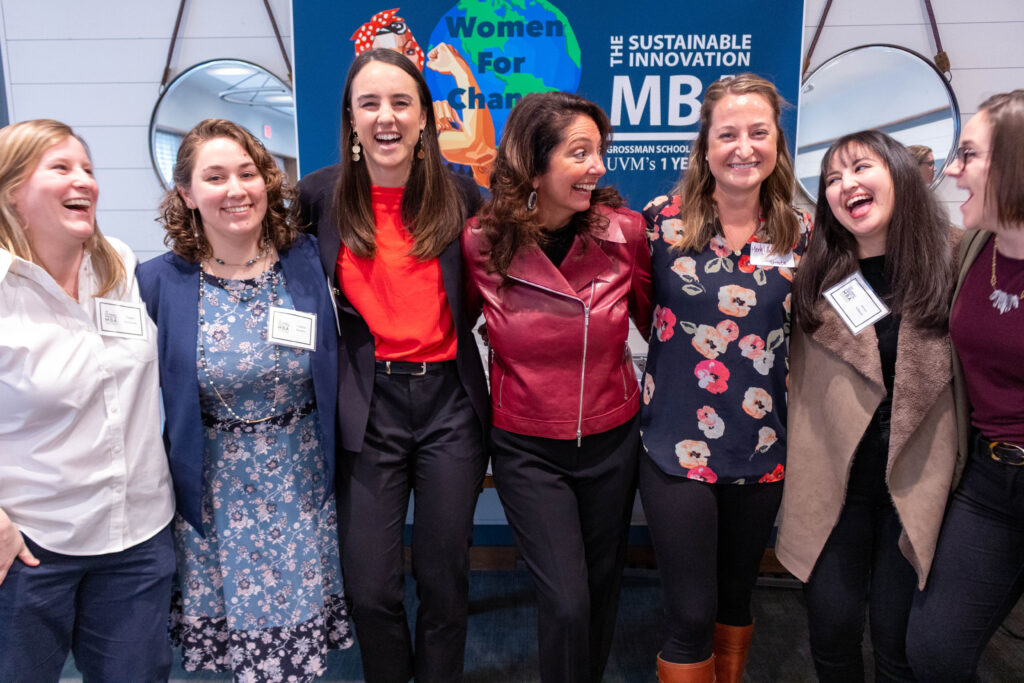

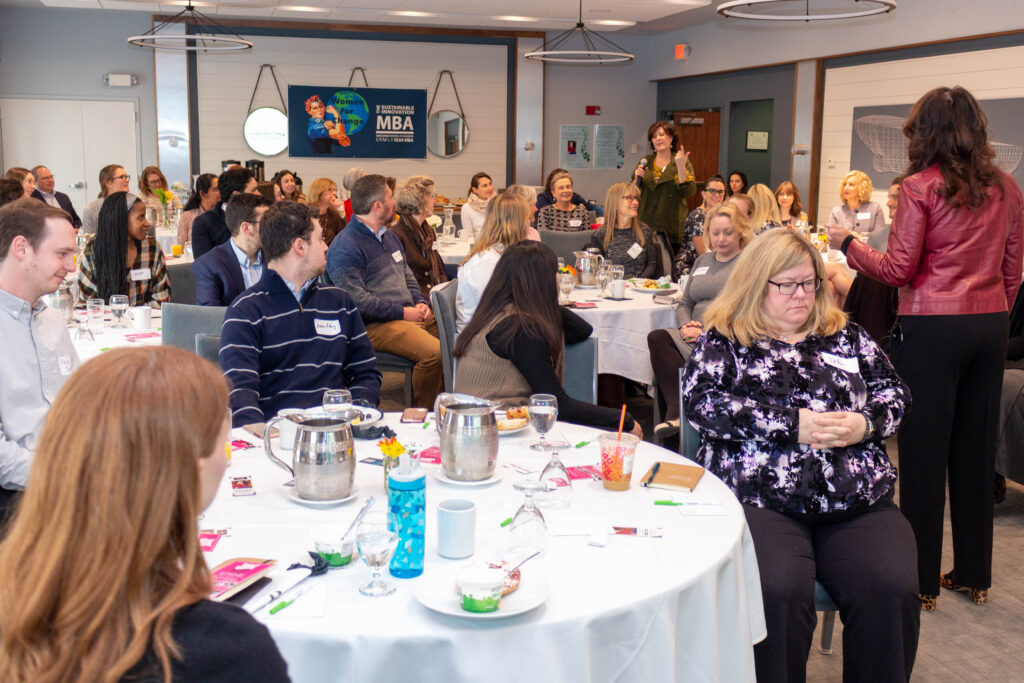
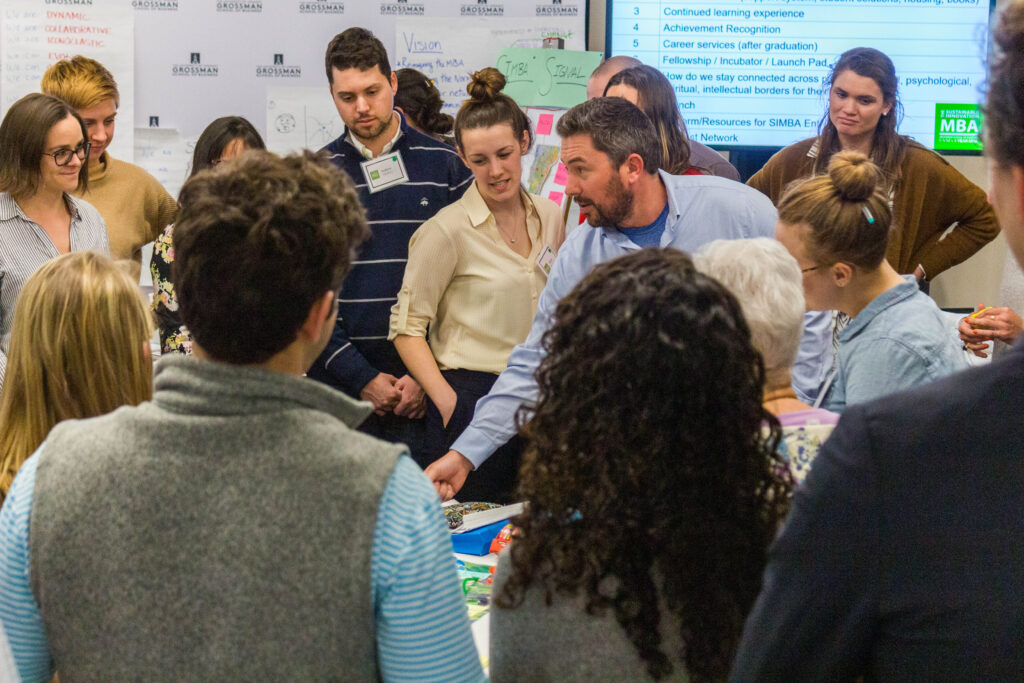
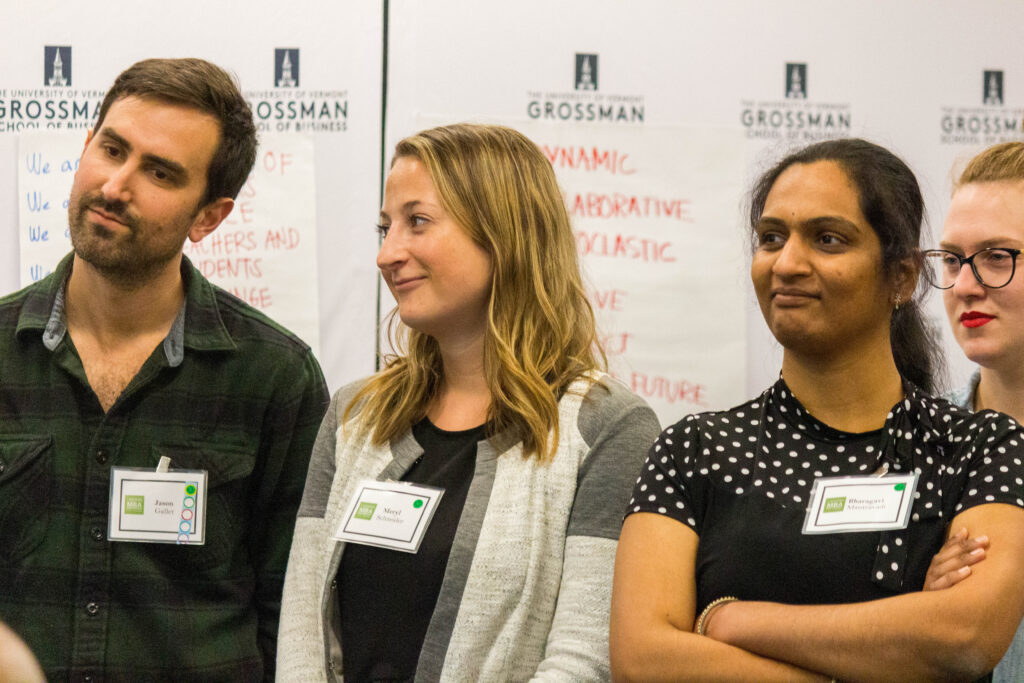
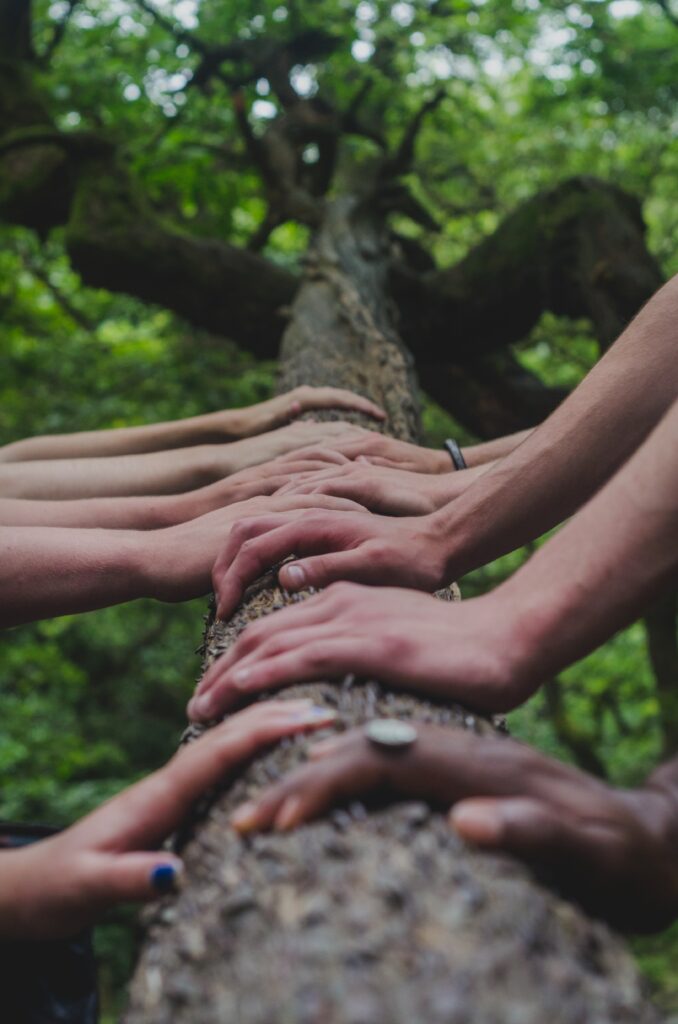
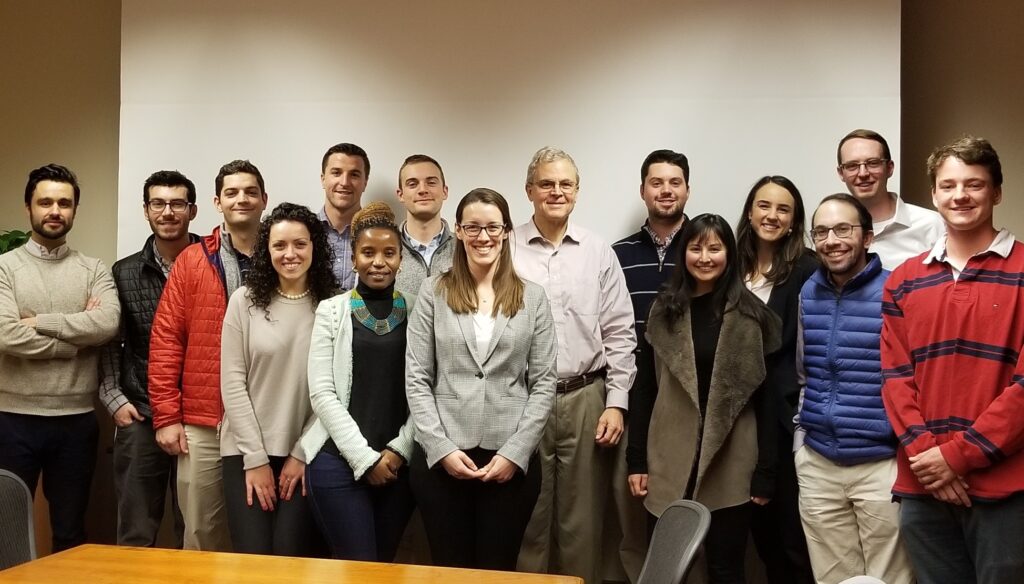 *Andrew Mallory, Andrew Oliveri, Alyssa Schuetz, Alyssa Stankiewicz, Esteban Echeverria-Fernandez, Emily Klein, Keil Corey, Maura Kalil, Matt Iacobucci, Noelle Nyirenda, Peter Seltzer, Ryan Forman, Tor Dworshak (in no particular order — EDITOR)
*Andrew Mallory, Andrew Oliveri, Alyssa Schuetz, Alyssa Stankiewicz, Esteban Echeverria-Fernandez, Emily Klein, Keil Corey, Maura Kalil, Matt Iacobucci, Noelle Nyirenda, Peter Seltzer, Ryan Forman, Tor Dworshak (in no particular order — EDITOR)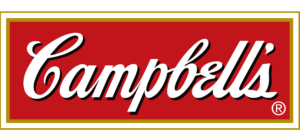 According to Innovator-in-Residence Dave Stangis, Chief Sustainability Officer at Campbell Soup Company, organizations go through phases when implementing sustainable practices which he called “Sustainability 1.0, 2.0, and 3.0.” Beginning his career at Intel as an Environmental, Health and Safety External Affairs Manager, Stangis’s initial role transformed into Director of Corporate Sustainability where he spearheaded corporate social responsibility and sustainability strategies in response to growing societal concerns of Intel’s environmental, social and economic impact. From there, Stangis’s growing passion for business and sustainability landed him a job at Campbell’s, where he has developed and led the firm’s widely known CSR, ESG and sustainability strategies.
According to Innovator-in-Residence Dave Stangis, Chief Sustainability Officer at Campbell Soup Company, organizations go through phases when implementing sustainable practices which he called “Sustainability 1.0, 2.0, and 3.0.” Beginning his career at Intel as an Environmental, Health and Safety External Affairs Manager, Stangis’s initial role transformed into Director of Corporate Sustainability where he spearheaded corporate social responsibility and sustainability strategies in response to growing societal concerns of Intel’s environmental, social and economic impact. From there, Stangis’s growing passion for business and sustainability landed him a job at Campbell’s, where he has developed and led the firm’s widely known CSR, ESG and sustainability strategies. Leading with Kenneth was a formal 2-credit course with two exams, some reflection papers, hundreds of slides and a daily-
Leading with Kenneth was a formal 2-credit course with two exams, some reflection papers, hundreds of slides and a daily- Leading for Sustainable Innovation ended up being one of my favorite classes. Seeing a familiar concept fleshed out, explained in depth, proved (through student testimonials, personal reflections and long-standing industry theories) to then understand it on a deeper level and be able to apply it in the world around me. It was great. There were several few high-level takeaways from this course, but I keep the following flashcard(s) in my backpack while the others have made their way into the recycling bin.
Leading for Sustainable Innovation ended up being one of my favorite classes. Seeing a familiar concept fleshed out, explained in depth, proved (through student testimonials, personal reflections and long-standing industry theories) to then understand it on a deeper level and be able to apply it in the world around me. It was great. There were several few high-level takeaways from this course, but I keep the following flashcard(s) in my backpack while the others have made their way into the recycling bin. Excerpt:
Excerpt: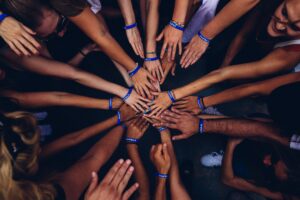 The first way that business can help refugees is by investing in refugee-owned/founded businesses. Research shows that refugees are more likely to hire fellow refugees. Because of this investment, businesses can support more than just one refugee; they can help many others get hired as well. One example of an impact investment organization that specializes in investing in refugee-founded businesses is the Refugee Investment Network (RIN). The RIN works to help move private capital to investment in financing of companies that benefit both refugees and their host communities.
The first way that business can help refugees is by investing in refugee-owned/founded businesses. Research shows that refugees are more likely to hire fellow refugees. Because of this investment, businesses can support more than just one refugee; they can help many others get hired as well. One example of an impact investment organization that specializes in investing in refugee-founded businesses is the Refugee Investment Network (RIN). The RIN works to help move private capital to investment in financing of companies that benefit both refugees and their host communities. I first encountered this quote by Gandhi on Pinterest last fall, when I was beginning the grad school application process. I found it to be a comforting reminder that although my aspirations were large (telling people you want to save the planet can result in a lot of blank stares), I could find a way to make an impact on my own terms. While, I’ve never been a particularly loud or forceful person, I’ve never lacked conviction. Ultimately, I knew that because I would probably never be the person leading a protest or going door-to-door, I needed to find the avenue that best allowed me to use my interests and abilities to bring about change. This is what drew me to The Sustainable Innovation MBA. I knew it would hone my current skill-sets, provide me with the tools needed to make an impact, and expose me to avenues for change I didn’t yet know existed. In this regard, the program has most certainly not disappointed.
I first encountered this quote by Gandhi on Pinterest last fall, when I was beginning the grad school application process. I found it to be a comforting reminder that although my aspirations were large (telling people you want to save the planet can result in a lot of blank stares), I could find a way to make an impact on my own terms. While, I’ve never been a particularly loud or forceful person, I’ve never lacked conviction. Ultimately, I knew that because I would probably never be the person leading a protest or going door-to-door, I needed to find the avenue that best allowed me to use my interests and abilities to bring about change. This is what drew me to The Sustainable Innovation MBA. I knew it would hone my current skill-sets, provide me with the tools needed to make an impact, and expose me to avenues for change I didn’t yet know existed. In this regard, the program has most certainly not disappointed.